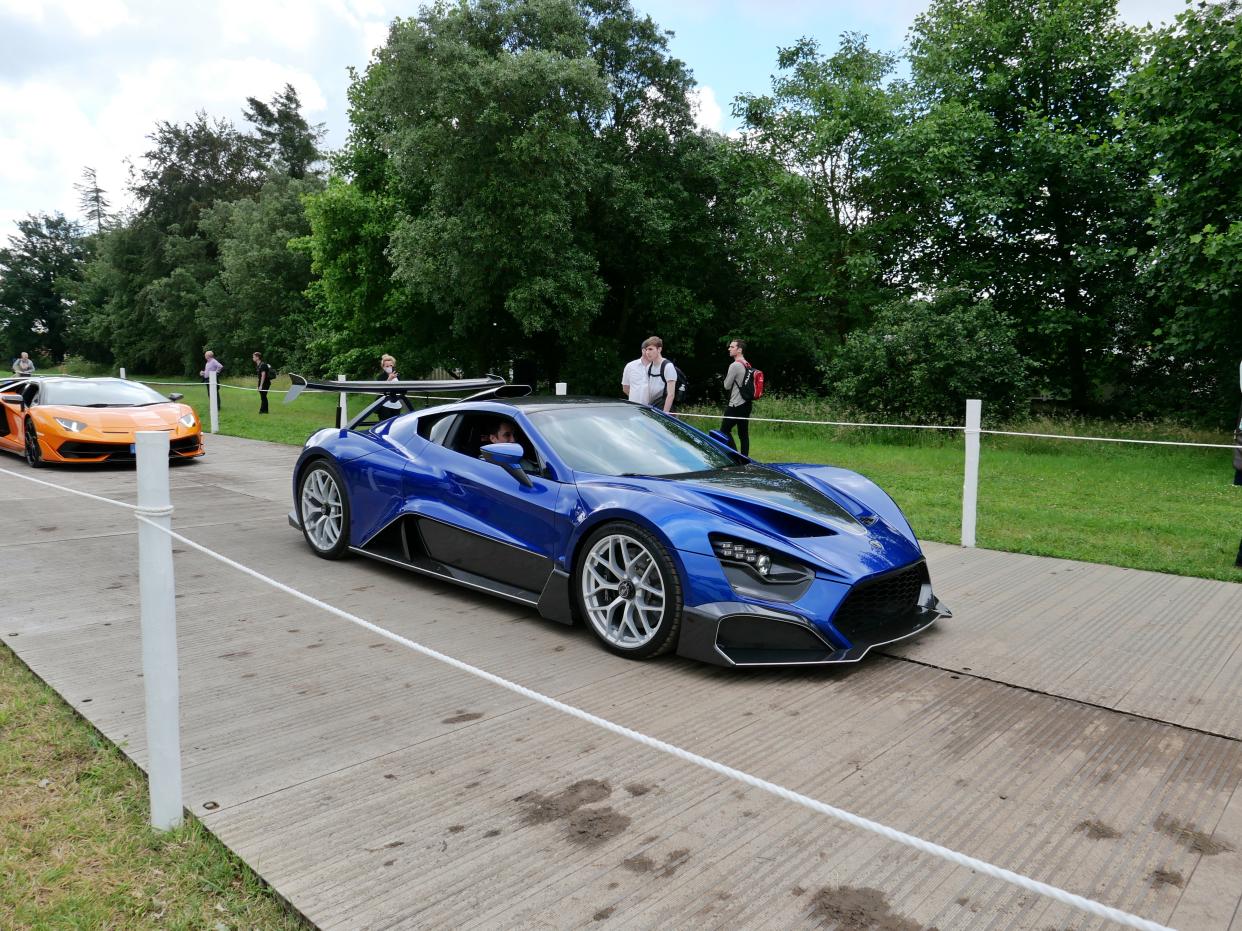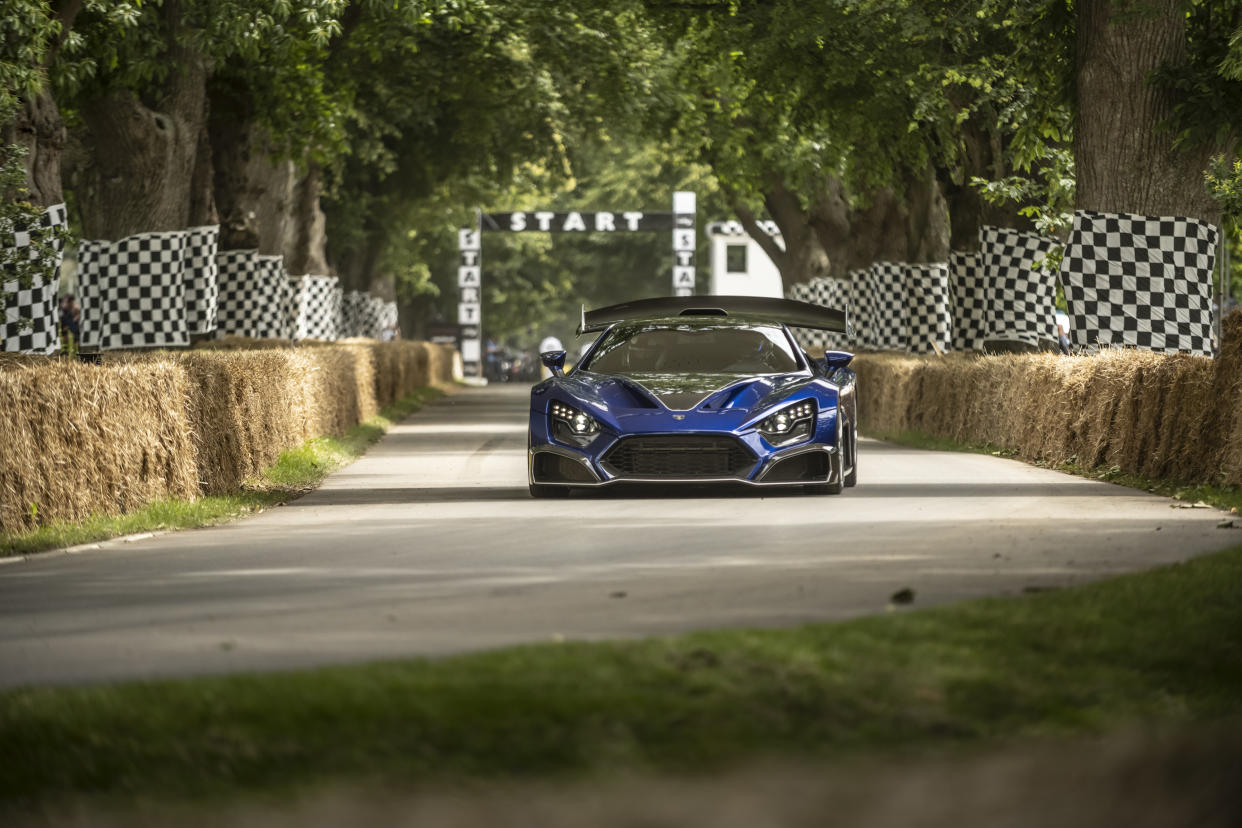Attacking the Goodwood hill climb in the 1,177bhp Zenvo TSR-S
“The tarmac is damp, we’re the first people up the hill, and the road is still muddy,” I’m told, as we edge towards the start line for a run up the iconic Goodwood hill climb.
Those words might be unnerving in a moderately quick car, but when you’re sitting in the Zenvo TSR-S, which has rear-wheel-drive and 1,177bhp on tap, they’re faintly terrifying.
Fortunately, we’re in the passenger seat. Behind the wheel is Alberto Solera, production manager for this ludicrously quick, limited-edition supercar.
You’d be forgiven for not having heard of the company. Based in Denmark, Zenvo builds cars in incredibly limited numbers – working to about five per year at the moment, though I’m told that with the new products the company is working on, that could increase to around 20 in the future.

The company was started in 2007 with the goal of building technologically advanced performance cars with an ‘analogue’ feel. Being such a low volume manufacturer, it isn’t bound by the same emissions targets as larger companies, meaning it doesn’t need to electrify its range.
As such, the TSR-S uses a 5.8-litre, supercharged, flat-plane V8 petrol engine. That astronomical power output contributes to a 2.8-second 0-60mph time and a top speed electronically limited to 202mph.
It’s a two-door, mid-engined car with a lightweight steel and aluminium semi-monocoque and a lightweight body made purely from carbon-fibre. Those body panels have fantastic attention to detail, with the Zenvo name and various patterns designed into the carbon-fibre’s weave. And that is not an easy task.
Its party piece is the rear wing. It’s an active part, which generally means it can change angle to deliver more downforce to improve cornering, or increase top speed. However, the Zenvo’s rear wing can move up and down on each side to optimise downforce depending which direction the car is turning.
The cloudy morning couldn’t dampen our spirits today. The first day of Festival of Speed officially is a go. We look forward to seeing everyone at our stand over the next four days and showing you the action live from our social channels too! @fosgoodwood #FOS #Zenvo #TSRS pic.twitter.com/v9wKjUXsvm
— Zenvo Automotive (@ZenvoAuto) July 8, 2021
Perhaps one of its coolest features, though, is the ‘infotainment system’. There’s an iPad holder in the centre of the dashboard, which means that the system can be continually updated as new iPads are released. It’s a clever way of making sure the infotainment is always up to date.
As Pushkar Godambe, the company’s sales director, explains, the buying and construction process allows for this sort of attention to detail.
He explains: “Obviously it’s been a bit different during Covid times, but generally we invite the customer to the factory and we speak to them about what they want. They can meet the design team, and they often don’t know what they want, or have an idea and need some guidance, so this makes them feel part of the process.”
Because of the bespoke nature of the build, it can take up to a year from the start of the process to the finish.

Back at the start line, and Solera is given the go ahead. He takes it easy off the line but begins to build the revs quickly. Even at idle the engine is raucous, vibrating through the cabin, but when the revs climb it’s an attack on the senses.
The wheels spin on the muddy tarmac in lower gears, but once the car’s hooked up it absolutely flies. It has a ‘dog box’ gearbox, which essentially means it doesn’t have the parts that smooth out gear changes in a regular car. The plus side is that the shifts are whip crack quick, but every shift punches you in the back.
Solera says it’s not too bad in everyday driving, and the severity of the shift is more aggressive if you’re hard on the throttle, but there are always some concessions to performance.
On the way up the hill the ludicrous performance on offer is on full display. The Zenvo shoots up the course, pops and bangs exploding from the exhaust. About half way up we have a seat of your pants sideways moment, but it’s all under control in a second and the excitement peaks.

As we cool down at the top of the hill it’s tough not to be impressed. Very few low volume manufacturers hang around as long as Zenvo, which has survived the 2008 financial crash and the coronavirus pandemic, coming out the other side with customers looking to buy and new products in the pipeline. The TSR-S itself is priced from €1.45 million (£1.2m), so it has to be good to justify its hefty price tag.
What remains to be seen is its place in the changing automotive landscape. As bigger manufacturers must move towards electrified models and buyers’ attitudes to petrol and diesel models change, it will be fascinating to see how niche manufacturers that combine old school engines with new school technology will fare.
Based on our brief run up the hill, the market for the overwhelmingly exciting experience that comes from a noisy, powerful engine like this will not die out any time soon…


